Why would you want a camera that shoots video in 1080 at 240fps? Playing back footage at a slower frame rate than it was recorded offers all sorts of creative possibilities. To do that, however, you need a camera that can record video at fast frame rates. Typically, slow motion footage is shot at a minimum of 60fps or up to 1,000fps at the extreme end.
A frame rate of 240fps these days offers a nice balance of super slow-motion capability without having to sacrifice too much resolution. So which cameras shoot 240fps at a high resolution? These days you can find a range of high-quality cameras that shoot video in 1080p at 240fps.
In this guide we’ll list out which cameras shoot 1080 at 240fps and explain what makes them great. But first, let’s answer some of the common questions about shooting slow-motion video.
How does slow motion work?
In short, the more frames you shoot per second, the more images you’ll have. The more frames you have, the more you can slow down your footage and have natural movements rather than choppy action.
How do you calculate the length of your slow motion footage? If standard playback is 30fps, then a second of your 1080 at 240fps video equates to 8 seconds of slow motion footage.
The more frames you can shoot per second (fps), the more you can slow down your footage for dramatic effect (think a water balloon bursting or a hummingbird’s wings). In the past, you’d have to shoot at a lower resolution to achieve these sorts of frame rates, but many cameras now offer the option to shoot 1080 (Full HD) at 240fps video.
What cameras can do 240fps at 1080?
Read on to find out which cameras shoot 1080 at 240fps. For a deeper dive into the many different camera types and features available, check out our range of camera buying guides.
GoPro Hero10 Black
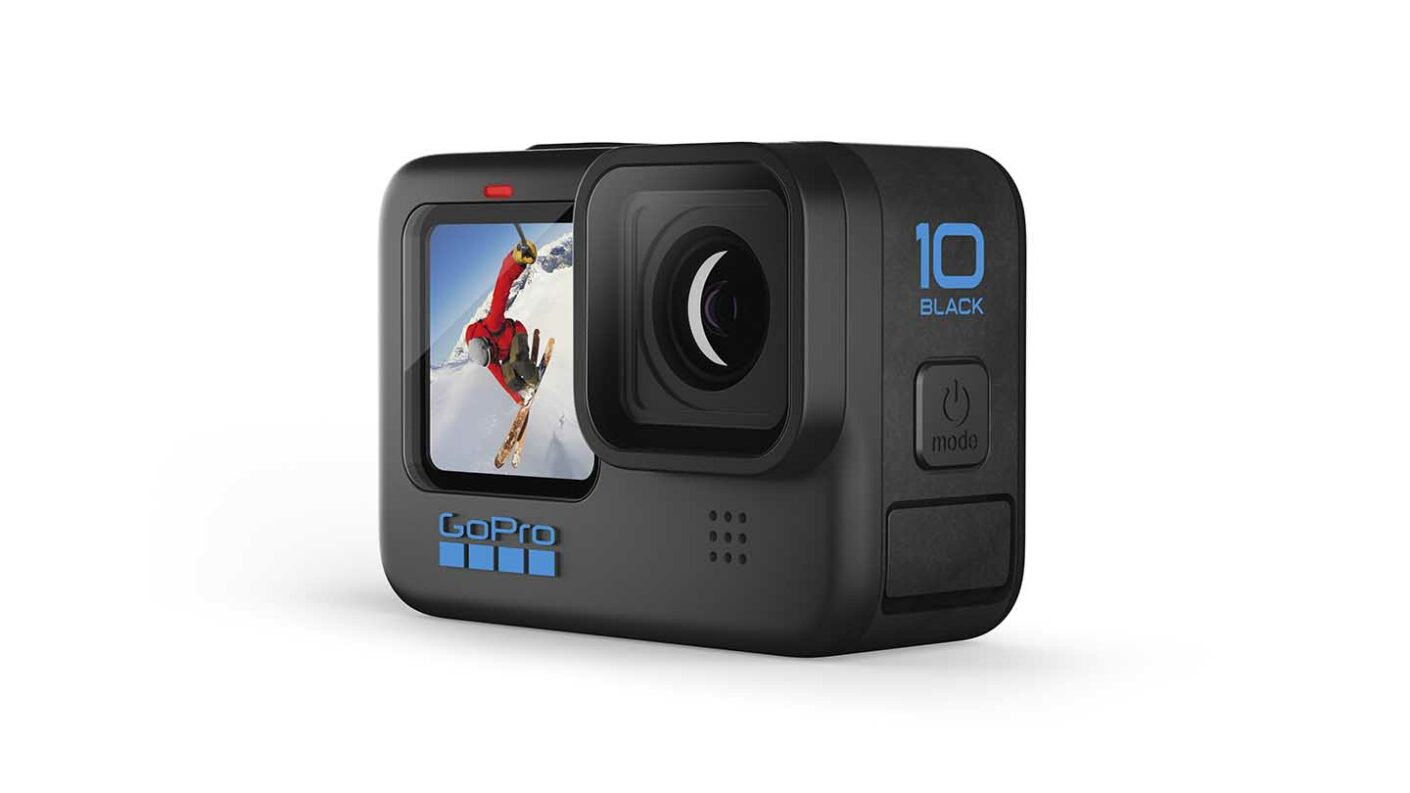
Specification
- Photo : 23MP
- 5.3K: 60fps
- 4K: 120fps
- Video stabalisation: HyperSmooth 4.0
- LCD: Front and Rear (Touch screen)
- Battery: Removable 1720mAh Lithium-Ion
- Slow-mo: 8X
- Waterproof: 33ft (10m)
- Processor: GP2
- Cloud compatibility: Auto upload to GoPro cloud (Sub required)
- Voice control: Yes
- Livestreaming: 1080p
While the biggest addition to the GoPro Hero10 Black its newly developed GP2 processor, there have also been some performance enhancements and boosts in resolution and frame rates.
The Hero10 Black adds 5.3K video resolution (compared to 5K in the Hero9 Black), then retains 4K, 2.7K and 1080 resolutions. However, for each of these the frame rate doubles.
When filming 5.3K footage on the GoPro Hero10 Black, you now have the option for 60fps, up from 30fps, and the camera no longer warns you that it will be recording in HEVC if you haven’t turned the notice off.
4K video jumps from 60fps to 120fps, 2.7K to 240fps from 120fps and 1080p remains at 240fps. To some degree, this pause at 240fps for 1080 seems on the surface to be due to a lack of space on the touch screen, but I’m sure it’s due to a much more technical issue.
The 180º rule would state that the 240fps requires a shutter speed of 1/480 so push that to 480fps and you’re looking at a shutter speed of 1/960 which is fast and probably technically difficult at present for the small camera.
£499
$499GoPro Hero9 Black
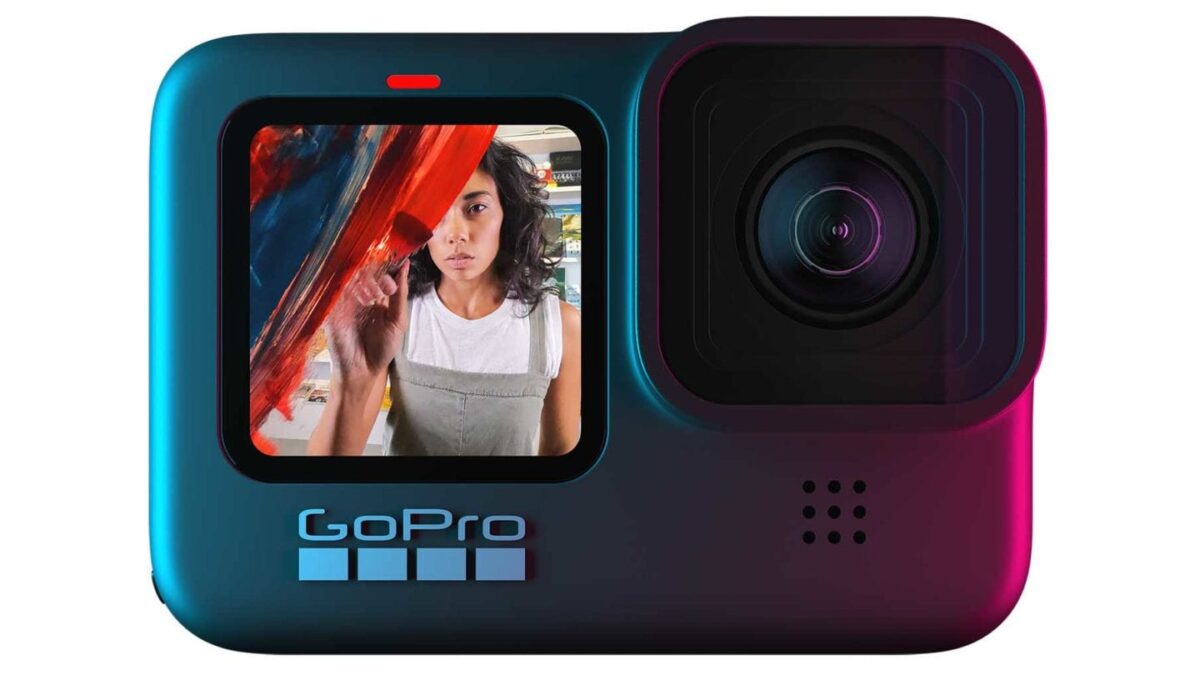
Specification
- Camera type : Action Camera
- Announced: 16th September 2020
- Max video resolution and frame rate: 5k 30p, 4K 60p, 2.7K 120p, 1440 120p, 1080 240p
- Video file formats: MP4 (H.264/AVC), MP4 (H.265/HEVC)
- Max photo resolution: 20mp
- Max bit rates: 100Mbps (2.7K, 4K, 5K)
- Screen: Rear: 2.27-inch touchscreen, Front: 1.4-inch colour screen
- Livestreaming: 1080p
- Voice control: 4 commands in 11 languages + 6 accents
- Battery: Removable, rechargeable 1720mAh lithium-ion
- Storage: MicroSD USH-I
- Connectivity: Wi-Fi, Bluetooth
- Stabilisation: Hypersmooth 3.0
- Waterproof: To 10m / 33 feet
- Dimensions (WxHxD): 71 x 55 x 33.6mm
- Weight: 124g
With the Hero9 Black, GoPro introduced its biggest jump in specifications since perhaps the Hero5 Black. The GoPro Hero9 Black can record video in 5K at 30p and in 4K at up to 60P. You can also capture slow motion movies at 2.7K at 120fps, as well as super slow motion video in 1080 at 240fps. You can also capture 20-megapixel stills, which was a first at the time of its launch.
The GoPro Hero9 Black offers built-in Hypersmooth 3.0 stabilisation technology with in-camera horizon levelling. What’s more, you can use the Hero9 Black from live streaming or as a web cam at 1080p.
The Hero9 Black also delivers 30% more battery life than its predecessor, completing what is one of the most substantial updates of the popular action camera in years.
£330
$349.98For
- No need for waterproof housing
- Dual Screen
- 8X Slow-motion
Sony A7S III
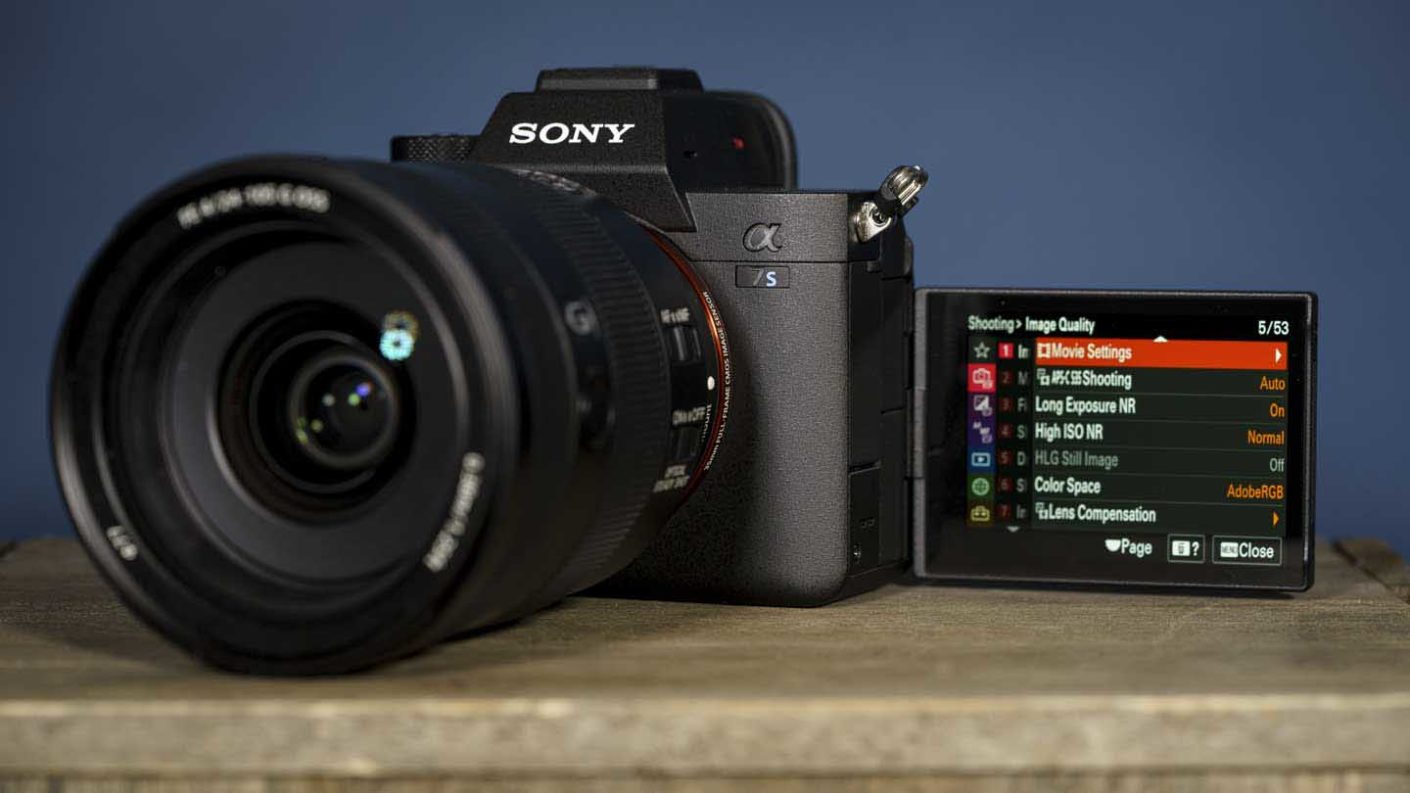
Specification
- Camera type: Full-frame mirrorless
- Announced: 28th July 2020
- Sensor: Full-frame 12.1Mp BSI CMOS
- Processing engine: Bionz XR
- Sensitivity: Video: ISO 80-102,400 expandable ISO 40-409,600. ISO base in S-Log is ISO 640 but it can be expanded down to ISO 160. Stills: ISO 80-102,400 expandable 40-409,600
- Autofocus system: Hybrid with 759 phase detection points and 425 contrast detection points, Real Time Eye AF (Human and Animal for stills, Human for video)
- Stabilisation: 5-axis IBIS and digital, up to 5.5EV shutter speed compensation
- Video resolution: 4K at up 120fps and 1080p at 240fps, 10-bit and 4:2:2 colour, 16-bit raw video over HDMI
- Video file formats: XAVC S,XAVC HS
- Video compression: XAVC S: MPEG-4 AVC/H.264, XAVC HS: MPEG-H HEVC/H.265
- 4K Video details: XAVC HS 4K 3840 x 2160 (4:2:0, 10bit, NTSC): 120p (200Mbps), 60p (150Mbps / 75Mbps / 45Mbps), 24p (100Mbps / 50Mbps / 30Mbps); 3840 x 2160 (4:2:0, 10bit, PAL): 100p (200Mbps), 50p (150Mbps / 75Mbps / 45Mbps); 3840 x 2160 (4:2:2, 10bit, NTSC): 120p (280Mbps), 60p (200Mbps / 100Mbps), 24p (100Mbps / 50Mbps); 3840 x 2160 (4:2:2, 10bit, PAL): 100p (280Mbps), 50p (200Mbps / 100Mbps) XAVC S 4K 3840 x 2160 (4:2:0, 8bit, NTSC): 120p (200Mbps), 60p (150Mbps), 30p (100Mbps / 60Mbps), 24p (100Mbps / 60Mbps); 3840 x 2160 (4:2:0, 8bit, PAL): 100p (200Mbps), 50p (150Mbps), 25p (100Mbps / 60Mbps); 3840 x 2160 (4:2:2, 10bit, NTSC): 120p (280Mbps), 60p (200Mbps), 30p (140Mbps), 24p (100Mbps); 3840 x 2160 (4:2:2, 10bit, PAL): 100p (280Mbps), 50p (200Mbps), 25p (140Mbps) XAVC S-I 4K 3840 x 2160 (4:2:2, 10bit, NTSC) (Approx.): 60p (600Mbps), 30p (300Mbps), 24p (240Mbps); 3840 x 2160 (4:2:2, 10bit, PAL): 50p (500Mbps), 25p (250Mbps)
- Gamut: S-Log2 and S-Log3, S-Gamut3.Cine and S-Gamut3
- Slow and Quick (S&Q) mode options: NTSC: 1fps,2fps,4fps,8fps,15fps,30fps,60fps,120fps, 240fps4, PAL: 1fps,2fps,3fps,6fps,12fps,25fps,50fps,100fps, 200fps
- Still File formats: Raw, JPG, HEIF
- Screen: 3-inch 1,440,000-dot vari-angle touchscreen
- Viewfinder: 0.64-inch type 9,437,184-dot OLED electronic viewfinder, with refresh rate up to 120fps, adjustable magnification up to 0.9x
- Maximum continuous shooting rate: 10fps with mechanical or electronic shutter for up to 1000 uncompressed raw files when a CFexpress Type 1 card is used
- Storage: Dual: SD/SDHC/SDXC (UHS-II) and CFexpress Type A
- Dimensions (W x H x D): 128.9 x 96.9 x 80.8mm / 5 1/8 x 3 7/8 x 3 1/4 inches
- Weight: 699g / 1 lb 8.7 oz
The Sony A7S III can shoot 4K video at up 120fps and 1080p at 240fps. There’s also 10-bit colour depth and 4:2:2 colour sampling available in all recording formats.
The bit rate in S&Q (Slow & Quick) mode is 250Mbps, which means the recorded bitrate / framerate is 10, much higher than in previous cameras. As a result, the in-camera slow and quick motion results should be much better than in the past.
The A7S III also marks a big step up over its predecessor, the Sony A7S II. The high-resolution viewfinder, vari-angle screen, re-thought menus and upgraded autofocus systems are of particular note along with the improvements to the noise control, colour and dynamic range.
The A7S III’s handling and control arrangement is a major improvement upon its predecessor, but it’s also much better than any of Sony’s other cameras. The A7S III is about more than grabbing the headlines for its resolution, it promises to make capturing 4K video easier than before and for that video quality to be the best 4K footage you can get from a Sony camera. It doesn’t disappoint as the quality of the footage is superb.
£3800
€4200 / $3499For
- Large pixels for great low-light performance
- 4K full-pixel readout without binning and 10-bit depth 4:2:2 colour available in all recording formats
- Vari-angle touchscreen and class-leading electronic viewfinder
Sony ZV-1 & Sony A1
Some of you reading why we haven’t included the Sony A1 and Sony ZV-1 in our list of which cameras shoot 1080 at 240fps. At first glance it might look like they should be included, but on closer inspection they fall just short.
The Sony A1’s S&Q mode stands for Slow & Quick and lets you quickly and easily shoot slow motion movies at a range of frame rates and resolutions. In the Shooting menu tab you can select to shoot super slow motion video at 240fps. However, the resolution at this frame rate isn’t quite Full HD. Its number of effective pixels is 1408 x 804 when shooting video at 240fps or 200fps.
Similarly, the Sony ZV-1 spec sheet says: [NTSC] mode XAVC S HD: 60p 50M (1,920 x 1,080/240fps). But the fine print reveals that the number of effective pixels at 240fps is 1,824 x 1,026, which just falls short of Full HD.
DJI Pocket 2

Specification
- Video Resolution: 4K @ 24/25/30/48/50/60fps, 2.7k and 1080p @ 24/25/30/48/50/60fps
- Sensor: 1/1.7-inch CMOS
- Pixel count: 64Mp
- Lens: FOV 93° f/1.8 Format equivalent: 20 mm
- Electronic Shutter Speed: 8-1/8000 s
- Stabilization: 3-axis
- ISO Range: 16mp Stills and video ISO 100-6400, 64mp stills 100-3200
- Video Modes: Video, HDR, Video, Timelapse, Motionlapse, Hyperlapse
The DJI Pocket 2 is one of the oddest cameras on this list, but also one of the most fun to use. It’s effectively a compact 4K video camera with a built-in motorised gimbal, which is small enough to slip in your pocket (hence the name) and take anywhere.
As well as shooting 4K and 2.7K at 60p, there’s also a slow-motion mode in 1080p at 240fps and 120fps.
The small camera is mounted on to an equally small motorised gimbal. The gimbal despite being small offers a controllable pan of -230º to 70º, tilt of -100º to 50º and Roll 45º. There’s a mechanical range of pan -250º to 90º, tilt -180 to 70 and roll of 90º which is all impressive.
The benefits for vloggers and anyone creating online video content is huge. This is a go-anywhere mini film studio that will fit in your pocket.
£339
$349For
- Ultra compact
- Amazing video and audio quality
- Mechanical stabilisation
Panasonic GH5S

Specification
- Sensor: 10.28MP Multi Aspect Ratio MOS Sensor
- Video: DCI 4K60p and Full HD 1080/240p Video
- Log Mode: V-Log L Gamma and HDR Hybrid Log Gamma
- Video Quality: Internal 4:2:2 10-Bit Long GOP
- Viewfinder: 0.76x 3.68m-Dot OLED Viewfinder
- Sensitivity: Dual Native ISO 400 and ISO 2500
- Touchscreen: 3.2" 1.62m-Dot Free-Angle Touchscreen
- Memory & Connectivity: Dual UHS-II SD Slots; Wi-Fi & Bluetooth
- Stills: 12-fps Cont. Shooting and 4K PHOTO Modes
If video is your bag, the GH5S is not only the best Panasonic camera for video but arguably the best camera for video you can buy. While many videographers have hailed the Panasonic GH5 as the ultimate video camera, Panasonic is now calling it the ‘ultimate hybrid camera’ with the GH5S getting ‘ultimate video camera’ status.
Like the GH5, the GH5S can shoot Cinema 4K (4096 x 2160) footage. However, whereas the GH5 is limited to 24p at this resolution, the GH5S can shoot at 60p, 50p, 30p, 25p or 24p. Furthermore, if you opt for 30p, 25p or 24p, you can shoot that C4K footage in 4:2:2 10-bit for a greater range of colours and smoother tonal gradations.
If high bitrates are important, the GH5S can record 4:2:2 10-bit 400-Mbps All-Intra in 4K 30p, 25p or 24p and C4K 24p. While C4K and 4K footage can be recorded at up to 60fps, Full-HD (1920 x 1080) footage can be recorded at up to 240fps, giving 10x slow motion playback.
Inside the GH5S is a new 10.2Mp High Sensitivity MOS sensor coupled with a Venus Engine. Although it has the Micro Four Thirds (MFT) lens mount, its sensor is a little larger than is found in most MFT cameras because it’s a Multi Aspect Ratio unit that enables the same diagonal angle of view to be recorded whatever the aspect ratio of the image or video.
What’s more, in a new move for a Panasonic G-series camera, each pixel on the GH5S sensor has two analogue circuits and this enables two base sensitivities (ISO 400 and ISO 2500). This Dual Native ISO Technology and the lower pixel count of the GH5S are designed to improve dynamic range and help keep noise in check even in very low light when sensitivity (ISO) is high.
£1829
$1997.99For
- Impressive video specification
- Timecode IN/OUT
- V-Log L pre-installed
Apple iPhone 13 Pro
Specification
- Camera type: Smartphone with 12Mp triple-camera system
- Announced: 14th September 2021
- Ultra wide: 13mm (equivalent) f/1.8 with 120° field of view, sensor-shift optical stabilisation, 6-element lens
- Wide: 26mm (equivalent) f/1.5, dual optical stabilisation, 7-element lens, 1.9 µm pixels
- Telephoto: 77mm (equivalent) f/2.8, dual optical stabilisation, 6-element lens
- Zoom range: Optical: 5.9x, Digital: 15x for stills, 9x for video
- Portrait Lighting effects: Natural, Studio, Contour, Stage, Stage Mono, High-Key Light Mono
- Stabilisation: Sensor-shift optical image stabilisation in wide and telephoto mode, just wide in video mode
- Video resolutions: 4K 24/25/30/60fps, 1080p 25/30/60fps, 720p at 30fps
- Cinematic mode (for shallow depth of field): 1080p at 30fps
- ProRes video (coming later this year): up to 4K at 30fps (1080p at 30 fps for 128GB storage)
- Slow motion recording: 1080p at 120/240 fps
- Selfie camera: 12Mp f/2.2 TrueDepth camera with Portrait mode, 4K video at 24/25/30/60fps
- Screen: Super Retina XDR display with ProMotion, 6.1-inch OLED with 2532x1170 pixels at 460ppi, 10-120Hz adaptive refresh rate
- Storage capacity: 128, 256, 512GB or 1TB
- Dimensions (HxWxD): 146.7 x 71.5 x 7.65mm
- Weight: 203g
£949
$999For
- High-quality images with impact
- Easy to use
- Great wide-angle capability

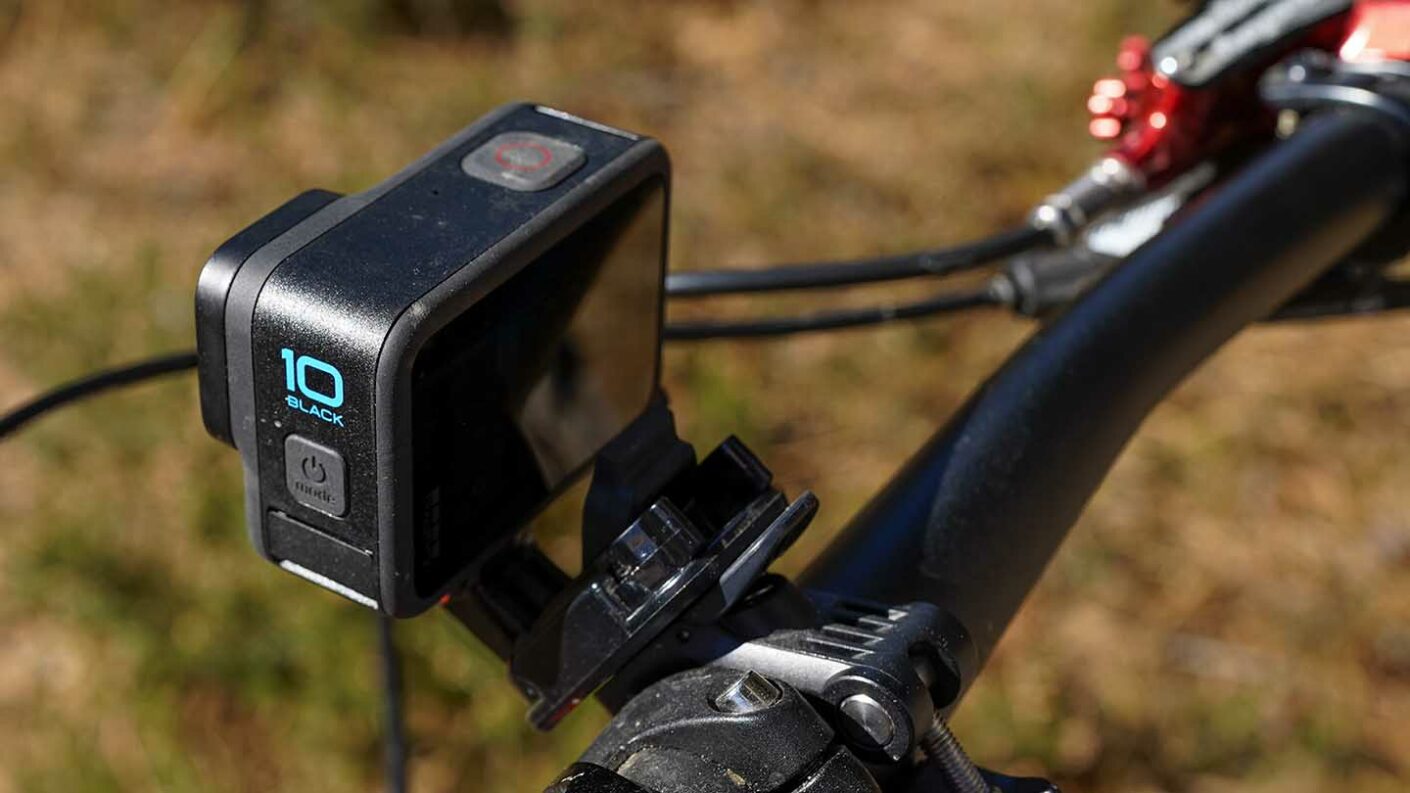
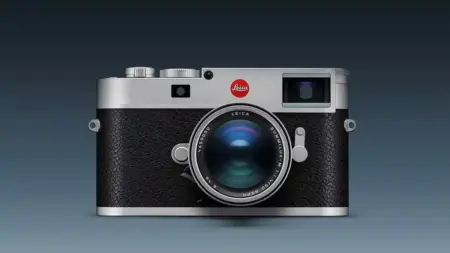
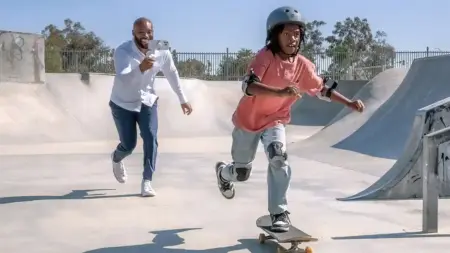
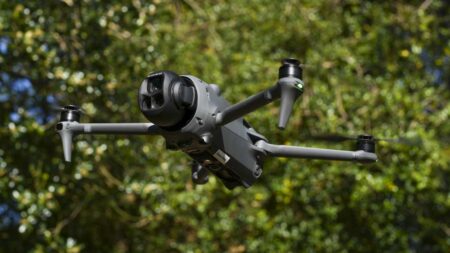
Leave a Reply